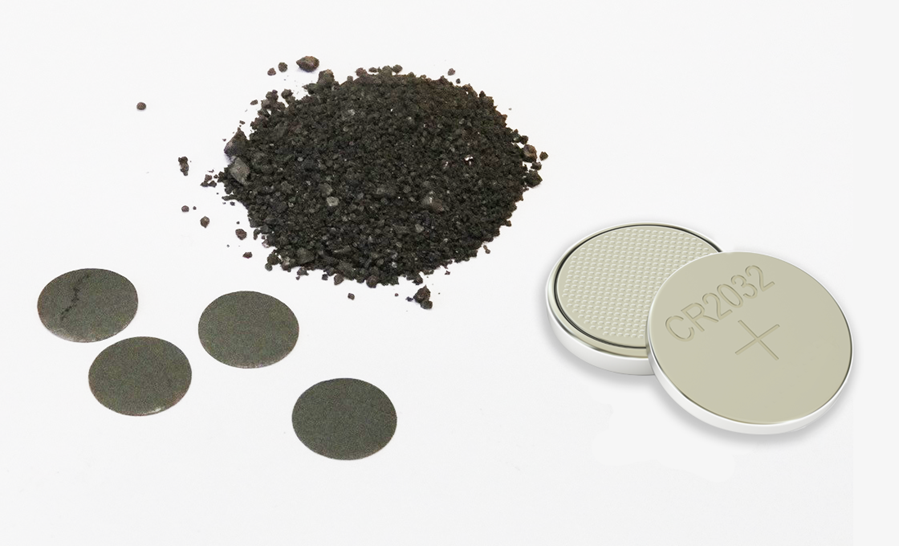Graphene enabled silicon-based lithium ion battery boosts capacity by 30%
Learn about Graphene Flagship researchers at VARTA developing graphene enabled silicon batteries for wireless headphones, hearing aids, wearables, and small electronic devices.
Silicon-based lithium-ion batteries could soon become the new standard. However, silicon has serious swelling problems that hinder their progress towards commercialisation. Now, a multidisciplinary team of Graphene Flagship researchers at VARTA Micro Innovation GmbH, Austria, BeDimensional and Istituto Italiano di Tecnologia (IIT), Italy, have identified how to use graphene as a key ingredient to overcoming these obstacles in a practical application.
Indeed, silicon is strongly believed to be the next-generation anode material in lithium-ion batteries. Replacing the state-of-the-art graphitic anode with silicon increases the lithium storage capability of the material by a factor of 10. However, when charged and discharged, silicon expands and contracts, which mechanically stresses and fractures the material, eventually causing the battery to fail after just a few cycles of use. Now, Graphene Flagship researchers have envisioned a way to stabilise the batteries using just a pinch of graphene. These newly developed graphene-enabled batteries withstand over 300 cycles and have capacities that are 30% higher than any currently available alternative.
Christoph Stangl, from Graphene Flagship partner VARTA Micro Innovation GmbH, explains: "Graphene is really the sprinkle on top of the cake: we add just enough to stabilise the architecture of the electrode during silicon expansion, which allows us to really take advantage of its outstanding electrochemical properties." The developed graphene-enabled coin cells could be used in a myriad of small electronic gadgets produced by some of world's most important companies, from wrist watches and wearable devices to car keys and wireless headphones. "These are very interesting, fast-growing market segments. VARTA is well-known as pioneer on developing customized solutions for energy storage and the progresses in silicon/graphene based high-energy technology will enable us to produce even better batteries.
Vittorio Pellegrini, from Graphene Flagship associated member BeDimensional, says: "We just need to add a small amount of graphene to attain this milestone." And, ironically, this is a good thing. If researchers added larger amounts of graphene, the proportion of silicon in the battery would be lowered, reducing the overall capacity of the battery. "Silicon increases the energy that can be stored in the battery, so we want to keep as much as possible – and thanks to graphene, we can do this without observing structural issues," he adds.
The Graphene Flagship's EU-funded project has helped advance this prototype in many ways. Not only were the first ideas for a graphene-enabled battery sparked during the first phase of the project, but in addition, a spin-off company, BeDimensional, was established to supply the graphene material. "The Graphene Flagship helped us create BeDimensional, spin-off of IIT, which is currently developing a number of graphene-based technologies exploiting a patented graphene production method," explains Pellegrini.
Graphene Flagship synergies brought together the cutting-edge research developed at IIT, the enthusiasm of its new spin-off BeDimensional, and the vast experience of an established industrial manufacturer like VARTA. "Thanks to the Graphene Flagship's Spearhead Projects, we can really push the readiness level of this technology and create a highly mature prototype," comments Stangl. "Now, we want to push this exceptional battery technology to a fast commercialisation," he adds. The same team has now embarked on a new challenge to develop a long-lasting sustainable graphene-enabled battery for electric vehicles.
Kari Hjelt, Head of Innovation of the Graphene Flagship, says: "The prototypes of VARTA show the power of graphene to enhance the properties of products, without disturbing the existing production processes. The successful collaboration between the partners of the Graphene Flagship exemplifies the importance of the systematic support by the European Commission for high-tech innovations. This case also shows that the Graphene Flagship Spearhead Projects can greatly help in our quest to move materials from research labs and towards real components and system level integration."

VARTA develops graphene enabled silicon batteries for wireless headphones, hearing aids, wearables, and small electronic devices.




